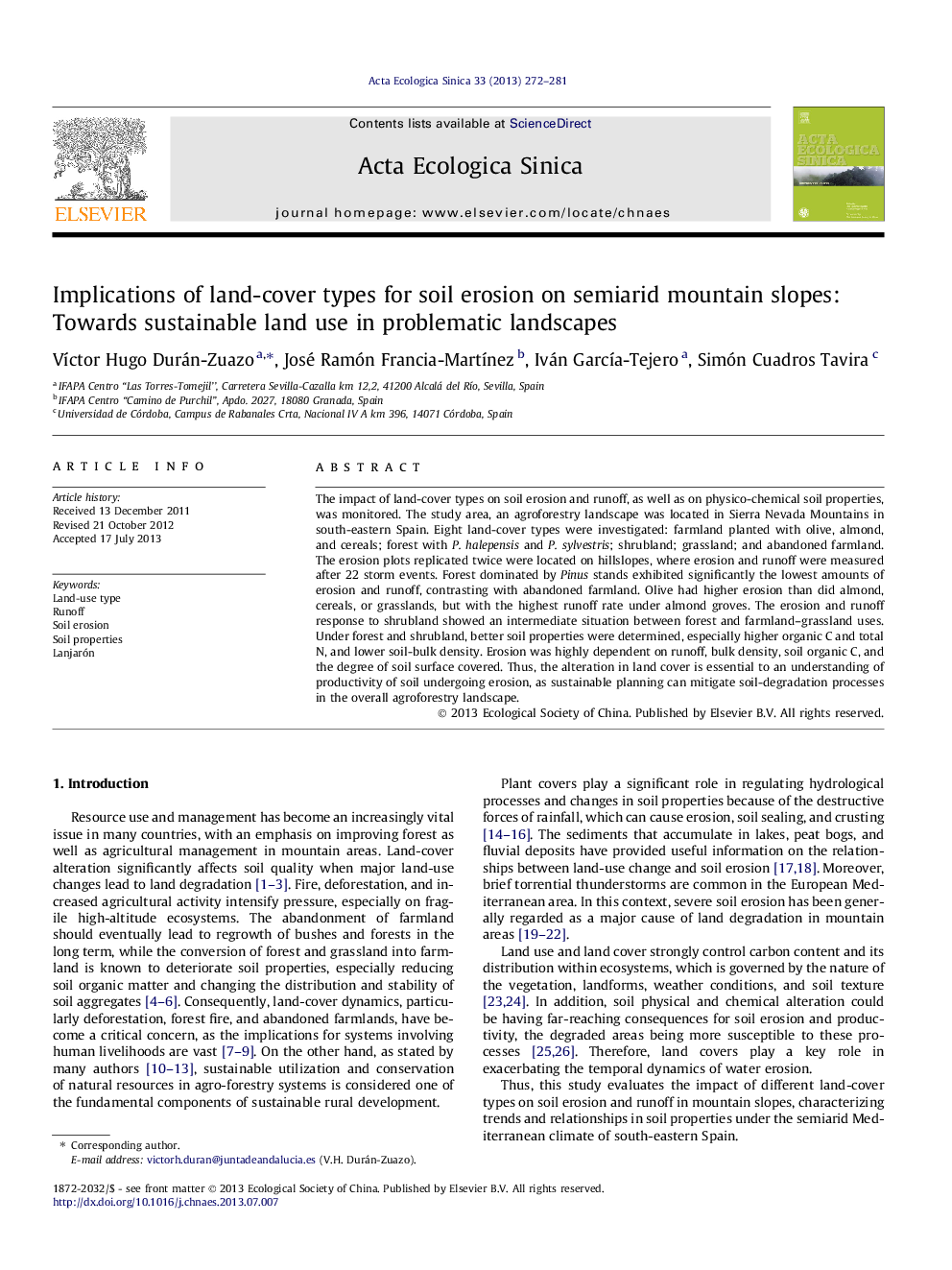| Article ID | Journal | Published Year | Pages | File Type |
|---|---|---|---|---|
| 4379802 | Acta Ecologica Sinica | 2013 | 10 Pages |
The impact of land-cover types on soil erosion and runoff, as well as on physico-chemical soil properties, was monitored. The study area, an agroforestry landscape was located in Sierra Nevada Mountains in south-eastern Spain. Eight land-cover types were investigated: farmland planted with olive, almond, and cereals; forest with P. halepensis and P. sylvestris; shrubland; grassland; and abandoned farmland. The erosion plots replicated twice were located on hillslopes, where erosion and runoff were measured after 22 storm events. Forest dominated by Pinus stands exhibited significantly the lowest amounts of erosion and runoff, contrasting with abandoned farmland. Olive had higher erosion than did almond, cereals, or grasslands, but with the highest runoff rate under almond groves. The erosion and runoff response to shrubland showed an intermediate situation between forest and farmland–grassland uses. Under forest and shrubland, better soil properties were determined, especially higher organic C and total N, and lower soil-bulk density. Erosion was highly dependent on runoff, bulk density, soil organic C, and the degree of soil surface covered. Thus, the alteration in land cover is essential to an understanding of productivity of soil undergoing erosion, as sustainable planning can mitigate soil-degradation processes in the overall agroforestry landscape.
